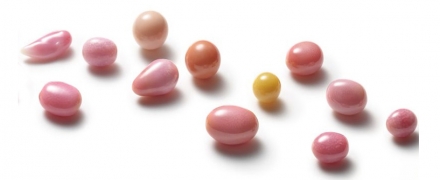open 10 am - 7 pm
laboratory is closed
Pearls that don't shine (no mother-of-pearl)

Currently, not quite ordinary pearls are gaining popularity in Russia - pearl-free, or otherwise "pearl-konkh". The color of such pearls varies from colorless through a range of cream, brown and yellow-orange shades to pink. One of the main features of such pearls is their flame-like or "fiery" pattern. The factors for evaluating such pearls are the color, the severity of the flame-like pattern, the area of its manifestation on the pearl, as well as the standard for any pearl - size, shape, degree of surface freedom from external defects and the selection factor. The producers of such pearls are as bivalve molluscs (for example - tridacna), or gastropods (for example - voluta). Attempts to cultivate this type of pearl have not been successful, so all pearl-free pearls on the market are natural. Conch pearls are often imitated using coral or shells from molluscs. One of the most common ways to refine such pearls is to dye them in more attractive shades.
В геммологической практике бывают весьма увлекательные случаи с диагностикой ювелирных вставок
Но помимо редкости цвета и высокой стоимости таких камней, многие розовые камни выделяются одной замечательной особенностью – они проявляют плеохроизм, то есть в зависимости от положения осмотра камня он может иметь дополнительные оттенки – оранжевый или пурпурный.
Currently, gemstones are produced by two fundamentally different technological methods - the High Pressure - High Temperature method (“HPHT”, High-pressure & High-temperature) and the Chemical Vapor Deposition (“CVD”, Chemical vapor deposition) method. The "HPHT" method is the most tested classical synthesis method, which can be used both carbon deposition on diamond from flux melts and catalytic reactions. In "CVD" synthesis, diamond growth occurs on a seed during carbon deposition mainly from a gaseous medium at relatively low temperatures and pressures.
Jewelry and precious stones are just such a category of goods, when buying which you need to pay attention to many criteria.
Sogdianite is a rather rare mineral and more often it can be found as a collection material (moreover, in systematic collections), and it is extremely rare in jewelry.






